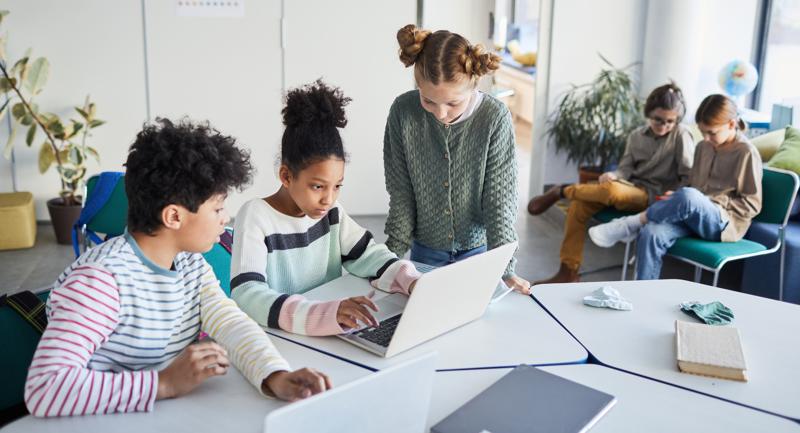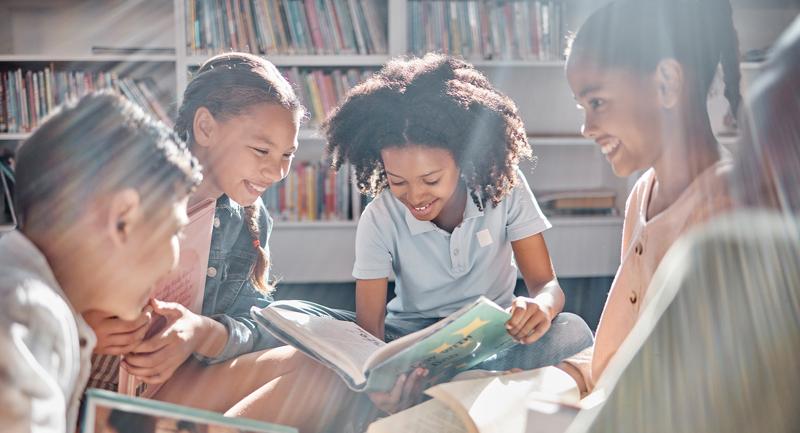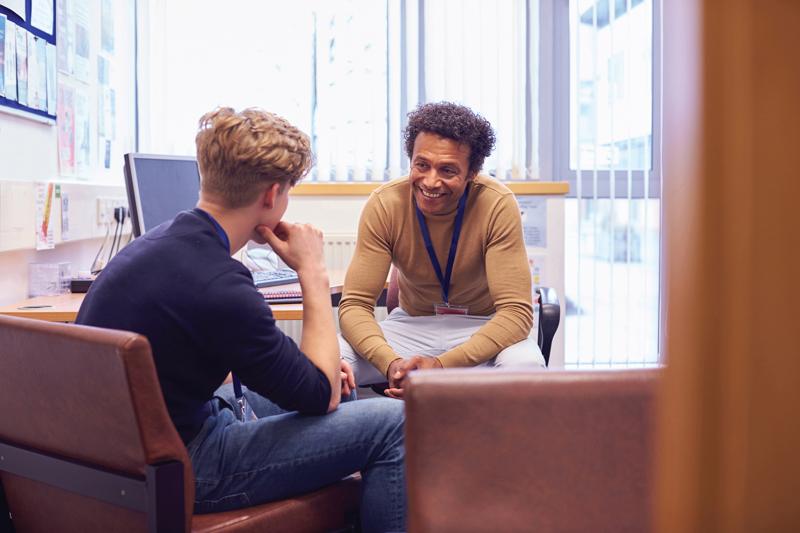Transformational Learning Principle
Nurture—Connect Learning to the Learner: Educators hold high expectations for all students and tailor instruction to meet students’ individual needs and interests. They use differentiation strategies and impactful technology tools to embrace learner variability, increase engagement, and advance progress toward mastery.
While it has always been important to connect learning to the learner, it has become imperative in today’s classrooms. Both Gen Z and Gen Alpha students have been largely described as uninterested in school; yet, they are also characterized by a deep desire to have a positive impact on society (Atchinson, 2024; Höfrová, Balidemaj, & Small, 2024). The key challenge is bridging the gap—crafting learning experiences that connect to students’ passions while empowering them as changemakers.
This presents an opportunity for educators to step back from what they are teaching, carefully consider who they are teaching, and forge connections that tie the two together. The teachers I work with who are seizing this opportunity serve as coordinators of busy classrooms where students engage in work they find meaningful, important, and accessible. These dedicated educators connect learning to the learner by (1) embracing inquiry, (2) exploring and harnessing student interests, (3) offering relevant choices, and (4) providing targeted formative feedback.
Embracing Inquiry
What does it mean to be human? This question captures students’ attention. It doesn’t have an easy or single right answer. It invites discussion, debate, and discovery in the realm of self and society. And it launched 9th graders at one of the school districts I worked with into a year-long, interdisciplinary investigation into what sustains us as humans, both physically and socially emotionally. These students in Rockingham County, Virginia, engaged in project-based learning that fused the subjects of ELA, world geography, environmental science, health, and PE. They consulted outside experts and worked collaboratively to pursue what this question meant to them through various interdisciplinary projects, such as designing sustainable cities, evaluating how individuals interact with the environment, and examining literature recounting how places shape people.
Essential questions such as this one are designed “to stimulate thought, to provoke inquiry, and to spark more questions” (McTighe & Wiggins, 2013, p. 3). They draw students into learning by creating excitement, curiosity, and the real-world connection today’s students crave. Other essential questions schools could pursue include:
Is technology helpful or harmful?
How far will people go to feel secure?
What does it take to resist social pressure?
What is the danger of a single story?
When is exponential modeling a more powerful predictor than linear modeling?
In studying these questions—taken from the whiteboards and SMART boards of teachers of varying content areas and grade levels across the country—it becomes clear that they all connect what students are studying to the students themselves, contextualizing the content so that the investigation is not just inviting, it’s intriguing. It can become even irresistible if it’s connected to student interests.
Today’s students invest in the things they care about; it’s our job
as educators to make school one of those things.
Exploring and Harnessing Student Interests
Beginning-of-the-year surveys and get-to-know-you activities can stir a sense of excitement and connection in classrooms, but that excitement can wane if the results remain stuck in a file. Worse, surveys can feel like a betrayal of trust to students if they fail to see how taking the time to respond to them pays off. While generations change, our students’ desire to be seen, known, and loved does not. Time spent gathering and analyzing data on what makes each student “tick” produces yields in both the affective and the academic realms. Teachers can systematically gather information about a student’s life inside and outside the classroom through surveys or through related activities such as:
Pie charts: Students divide a circle into five proportional “slices” that represent their interests or how they spend their free time.
Artifact bags: Students fill paper bags with objects or images important to them. They either share these with their classmates, or the teacher “unearths” them while classmates guess the owner of each bag.
Acronym poems: Students write their names (first, last, or both) vertically, then choose words to describe themselves that begin with each letter of their name.
Number collages: Students create a collage of words and pictures demonstrating all the different ways numbers help to define what’s important in their lives.
Teachers can use a tool like Canva for some of these activities to allow for greater personalization and design.
Once teachers have gathered student interest information, they can use it in many ways to inform both lesson-level adjustments and unit- or project-level planning.
One high-leverage lesson-level use of student survey data that I like is the personalized warm-up. These warm-ups can be constructed using information gleaned from real student interests. Teachers start by asking students to create Personal Postcards, a simple task where students choose five images that represent them, insert them in a digital slide, then add a second slide containing explanations of each image’s significance. Teachers can use the information on the postcards in multiple ways to help connect students to their learning. For example, the following warm-up problems, for use at the beginning of class, are personalized to particular students and subjects, showcasing their interests.
Geography: Last summer, Mennoi traveled to Arizona for vacation. He spent two weeks there and did some hiking. Study the landforms, plants, and animals featured in the photographs from his trip. Then, (1) describe how they characterize the Southwest region of the United States, and (2) write two questions to ask Mennoi to help you better understand the region’s major physical and environmental features.
Math: Lucy is baking two dozen cupcakes for her best friend’s birthday party. They both love anime, so she will decorate the cupcakes with that theme. Instead of buying ready-made edible toppers, she wants to use one of two handcrafted recipe ideas she found on Pinterest. Compare the two recipes using online prices from Kroger to see which is more cost-effective. Be sure to double check your calculations when converting fractions and decimals.
ELA: Rewrite the following paragraph by combining its simple sentences into compound sentences. You must also include at least two compound-complex sentences: “Sophia is the oldest in her family. She has two younger sisters. She has a younger brother. Sophia and her siblings are close. Her sisters borrow clothes from her without asking. Sophia doesn’t mind. Sophia loves to play tennis. Sophia is on the tennis team. Sophia likes to go to football games. Sophia socializes more than she watches the games.”
Using student interests in this manner can help students feel seen and connected to classmates. Information from the postcards can also be used to put students with similar interests in groups for small tasks. For example, “Today I formed your homework-check groups by putting you with classmates who share similar hobbies. Look for your name in the sports group, dance group, movies group, gaming group, or collectors group.”
Essential questions draw students into learning by creating excitement, curiosity, and the real-world connection today’s students crave.
Offering Relevant Choices
We can up the ante of student investment by using student interests to create task choices. Providing choices around the same learning goals, or differentiating according to student interest, can help learners experience affinity and agency with the curriculum, heightening engagement, persistence, and ultimately, success. Interest differentiation can occur at the lesson level or it can span the course of a unit or final project. In both cases, teachers can opt for building in choice around one or more of the following areas:
Topic: There can be variety in what students study, such as a choice of ecosystems or organisms in science; a range of legislation, historical figures, or geographic features in social studies; or a variety of authors, poems, or perspectives in English. If students need exposure to all topics, they can divide and conquer. For example, if all students need to study all four types of parallelograms, they can choose to become an expert in one, then share their expertise with peers.
Product: Students can choose how to demonstrate what they’ve learned. Teachers can allow flexibility in what students produce, be it a blog, vlog, podcast, or infographic. This choice naturally leads to a third avenue of choice—technology.
Technology: Depending on the product students are creating, teachers can allow students to choose the best tool for the job. They may consider GarageBand or Anchor for podcasts, Piktochart or Canva for infographics, iMovie or Icecream for video editing, and so on.
After students complete their tasks, they can meet in mixed small groups to share their work and learn from each other, jigsaw-style, about important content or skills. Returning to the parallelogram example earlier, each student would choose one of the four types to study, move into like-choice groups to study it, then move into mixed-expert groups to share their learning with, and glean knowledge from, experts on the other three types. The science example in Figure 1 would function the same way. Jigsaw requires structured sharing protocols and built-in accountability measures, but it addresses today’s students’ need to learn for the sake of sharing rather than for the sake of learning.
Finally, feedback is a powerful way to connect learning to the learner. Both Gen Z and Gen Alpha students thrive on specific instructions and regular, targeted feedback (Höfrová et al., 2024). Given at the right time and in the right way, formative feedback can connect students with the information and tools they need to take their next steps. Since it is nearly impossible to give specific, targeted feedback to an entire class at one time, it makes sense to look for patterns in student work and provide that feedback in smaller grouping configurations, such as stations. Customizing feedback in this manner is a form of readiness differentiation, and it can flow very organically from studying student work. An ELA teacher, for example, might examine a set of rough drafts and discover students are at different levels of mastery regarding incorporating evidence into their writing. She then forms small groups according to the kind of feedback she needs to give.
Some students may need to locate and integrate more supporting evidence.
Other students may have included sufficient evidence but need to explain it.
Still other students may be ready to vary the type of evidence they incorporate.
The teacher can conduct targeted conversations about those patterns with students at the teacher-led station while using technology (e.g., digital tutorials, exemplars with voice-overs) to provide guidance at the other stations. This approach capitalizes on today’s students’ appreciation of low-stakes groupwork and use of videos in instruction while simultaneously facilitating more direct face-to-face conversations about learning.
Investing in Interests
Today’s students are amazingly thoughtful individuals who are passionate about the people they love and the plight of the world around them. They invest in the things they care about; it’s our job as educators to make school one of those things. If we can connect the learning to the learner by using inquiry-based teaching, building relationships, offering relevant choices, and providing sound feedback, we have a strong chance to do so.
Reflect & Discuss
➛ What essential question could frame your next lesson or unit that would capture the attention of your students and allow them to connect to their learning?
➛ How might you add choice to an assignment that would allow students to express themselves differently?
➛ What new strategies or activities could you incorporate to learn more about your students and their interests?
The Flexibly Grouped Classroom
Written for teachers of all subjects and grade levels, Doubet's book is a comprehensive guide to creating purposeful and fluid student grouping in the classroom.









